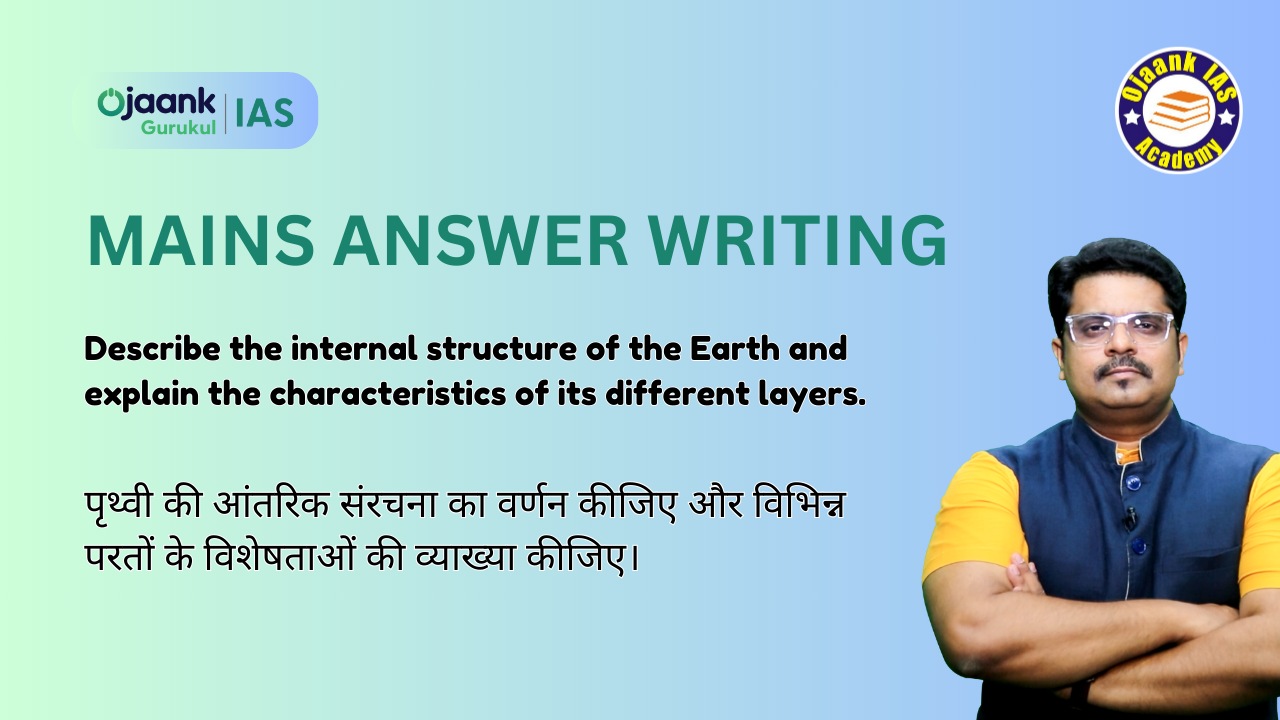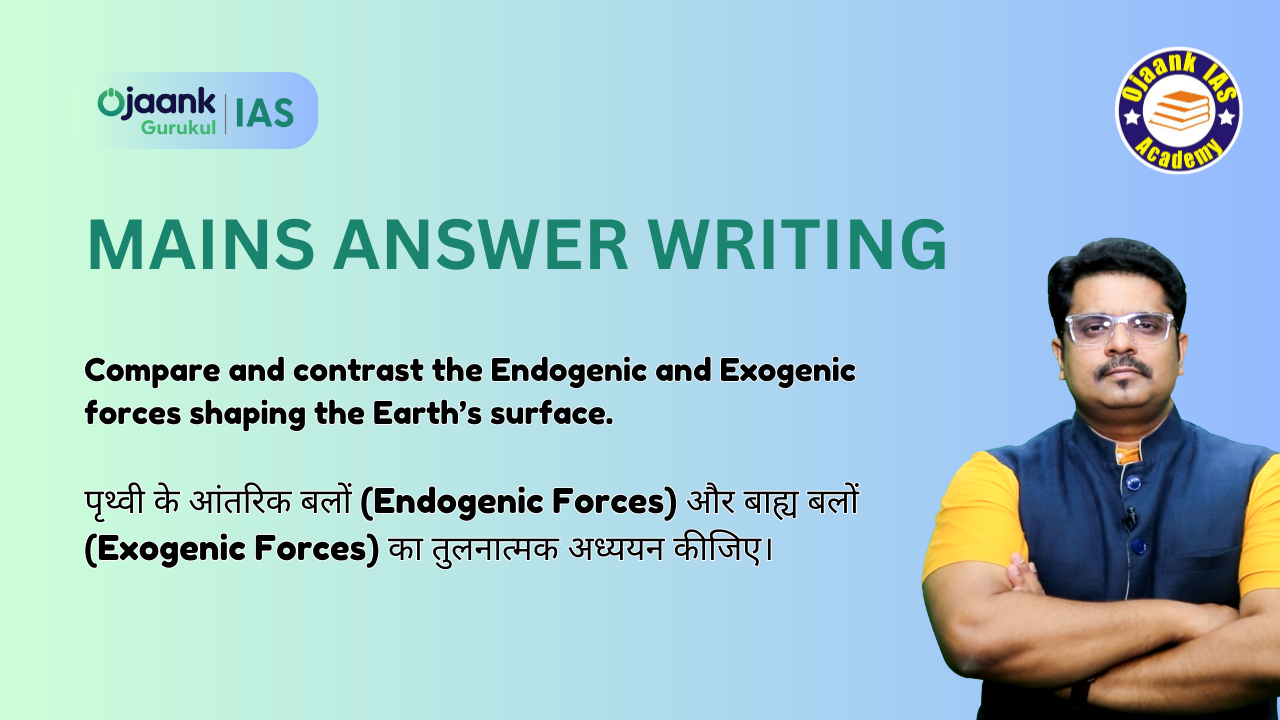Describe the internal structure of the Earth and explain the characteristics of its different layers.

Internal Structure of the Earth
The internal structure of the Earth is divided into three main layers:
1. Crust
-
The outermost and thinnest layer of the Earth.
-
Around 35 km thick on the continental part and only about 5 km on the oceanic part.
-
Composed mainly of Silica (Si) and Aluminium (Al) – known as SIAL.
-
The oceanic crust is made up of Silica and Magnesium – called SIMA.
2. Mantle
-
Located beneath the crust, extending to a depth of about 2900 km.
-
Composed of dense, hot, and semi-fluid material known as magma.
-
The upper part is solid, while the lower part is semi-fluid in nature.
3. Core
-
The innermost part of the Earth, extending to about 3500 km in depth.
-
Composed mainly of Nickel (Ni) and Iron (Fe) – hence called NIFE.
-
The outer core is in liquid form, whereas the inner core is solid.
Conclusion
-
The internal structure of the Earth consists of various layers that make it a dynamic planet.
-
Understanding these layers is helpful in the study of seismology, mineral resources, and volcanology.
Copyright 2022 power by Ojaank Ias






